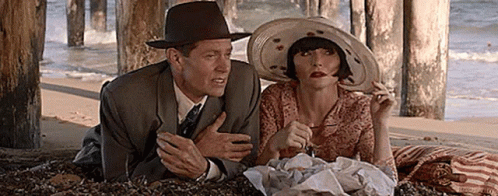Hello writer bees!
Some folks think murder mysteries are complicated to write. And they’re right. Mysteries involved many moving pieces. But once you understand the core elements of a mystery, writing in that genre won’t be as intimidating as it would appear.
So, continuing with the May of Mystery theme, let’s go over the essentials to any great mystery.
The Right Hook
Right off the bat, the crime has to grab the reader’s attention. If you don’t have the audience’s interest from the start, they won’t be interested in how the mystery is resolved. Take it from someone who has changed the murder of my WIP murder mystery before. Whether it’s a murder, a kidnapping or a theft, the mystery itself should bring shock and intrigue to the audience. Really set the scene for the reader, give them every bit of detail, no matter how small or how gruesome.
The Investigator
When mystery is afoot, someone’s there to crack the case. A sleuth character is the heart and soul of this genre. The audience needs someone to follow and root for in this mystery.
Keep in mind, the protagonist does not have to be a bonafide detective. They can be a private detective, a member of law enforcement, or a regular joe who fell into the scene. And more than one person can be involved, like a detective duo (ex. Sherlock Holmes and Watson) or a team of sleuths (Scooby Doo and Mystery Inc.) Regardless, the protagonist(s) is invested in the investigation and is determined to uncover the truth.
Also, ask yourself, why is the detective compelled to solve the case? The protagonist’s motives are just as interesting as the antagonist’s motives.
Suspicious Suspects
For any kind of mystery, a line-up of suspicious characters is assembled. And hidden amongst them is the true culprit. Each suspect must be memorable and standout from the rest. For example, take the suspects from the Cluedo board game. All distinct in character and yet equal in motive and opportunity to commit the crime. If not differentiated, characters will bleed together and get easily mixed up by the reader.

How many suspects should a mystery story have? Personally, I think 3 to 6 suspects is a good number. Too many suspects will overwhelm, too little is too easy. Also, consider how the suspects relate to one another. Are they enemies? Are they lovers? How do those relationships effect the victim?
Clues and Red Herrings
Both the detective and the reader need breadcrumbs to follow. All of the evidence of the case must be out in the open. There’s no holding out on clues in a proper mystery, or the audience will feel cheated. However, not every hint leads to the truth. Some clues, called Red Herrings, divert an investigation, taking the detective down a dead end (no pun intended).

Keep track of all the clues presented. Jot down a list of clues as you scatter them throughout the story. When does this piece of evidence appear in the story? How does it connect to the overall plot?
A Satisfying Finale
Every murder mystery needs a grand finale. The big reveal, when all the clues come together and the culprit is discovered. Sure, there can be some plot twists, but a mystery writer must deliver a satisfying ending to the audience. This means the other suspects are given alibis, proving without a doubt, the identity of the antagonist. And every bit of evidence is explained in detail. No loose plot ends, all story lines must be resolved in the end.

What are some of your favorite mysteries? Let me know in the comments.
Stay safe and keep writing!
– Lady Jabberwocky




Thank you for posting this! I’ve never been comfortable writing mysteries, but this helped a lot! Maybe I should try my hand at mysteries sometime 🙂
LikeLiked by 1 person
Thank you for your comment! So glad you found this post helpful. 🙂
LikeLiked by 1 person
I love impossible-crime mysteries where the howdunnit is as compelling as the whodunnit and whydunnit. The Problem of the Green Capsule, Death of Jezebel, and Rim fo the Pit are probably the best examples.
What you say about clues is vital to any mystery–they must play fairly with the reader. When the author cheats, the “game” is ruined.
I’ve written two impossible-crime mysteries. The best advice I’ve heard is to write backward. It’ll help keep your plot from growing too unwieldy.
LikeLiked by 1 person